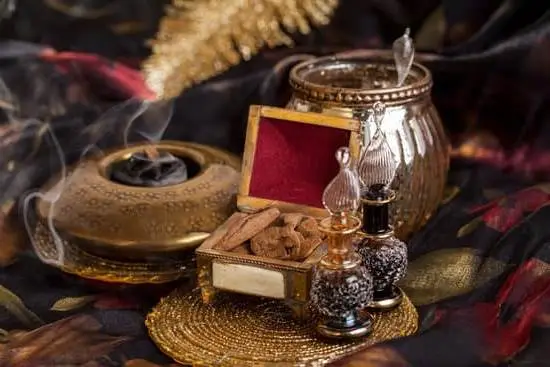When it comes to relaxation and rejuvenation, massage therapy is a popular choice for many individuals. However, with numerous massage techniques available, it can be challenging to determine which one is the best fit for your needs. In this article, we will delve into the age-old debate: which is better – Swedish or aromatherapy massage?
Swedish massage and aromatherapy massage are two widely practiced forms of therapeutic bodywork that offer various benefits. While both aim to promote relaxation and alleviate tension, they differ in their approaches and techniques. Understanding the disparity between these two types of massages can help individuals make an informed decision about which one may be more beneficial for their specific needs.
To begin our exploration, we will first distinguish between Swedish and aromatherapy massage by delving into their unique histories and origins. We will then proceed to examine the specific techniques used in each type of massage, followed by an in-depth look at the distinct benefits they offer. By the end of this article, readers will have gained valuable insights into Swedish and aromatherapy massage, ultimately helping them determine which type may be better suited for their individual requirements.
History of Swedish Massage
The history of Swedish massage dates back to the early 19th century when it was developed by a Swedish physiologist named Per Henrik Ling. Ling combined various techniques from ancient Greek, Chinese, and Roman traditions to create what is now known as Swedish massage. The main aim of this form of massage was to increase blood flow, promote relaxation, and alleviate muscle tension.
The development of Swedish massage was greatly influenced by Ling’s background in anatomy and physiology, leading him to incorporate specific movements and strokes that targeted different muscle groups. These techniques included effleurage (long, sweeping strokes), petrissage (kneading motions), friction (deep circular movements), tapotement (percussive movements), and vibration. Over time, Swedish massage became popular not only in Sweden but also in other parts of Europe and eventually made its way to the United States.
In the modern era, Swedish massage has become one of the most widely practiced forms of massage therapy worldwide. Its effectiveness in promoting relaxation, improving circulation, and reducing muscle tension has contributed to its widespread popularity. Today, Swedish massage is commonly offered at spas, wellness centers, and physical therapy clinics as a means of enhancing overall well-being and relieving muscular discomfort.
- Per Henrik Ling developed Swedish massage
- Incorporated techniques from ancient Greek, Chinese,and Roman practices
- Became popular in Europe and eventually the United States
History of Aromatherapy Massage
The practice of aromatherapy massage can be traced back to ancient civilizations, where essential oils were used for their healing properties. The use of aromatherapy in conjunction with massage has been a common practice in various cultures for centuries. The roots of aromatherapy massage can be found in the traditions of ancient Egypt, China, and India.
Ancient Practices
In ancient Egypt, aromatic oils were used for both medicinal and cosmetic purposes. Essential oils were extracted from plants and herbs and used in religious ceremonies, as well as for their therapeutic benefits. Similarly, in China and India, aromatic plants and herbs were also used for their healing properties in traditional medicine practices such as Ayurveda.
Modern Development
The modern concept of aromatherapy was developed in the early 20th century by French chemist Rene-Maurice Gattefosse. He discovered the healing properties of lavender essential oil when he applied it to a burn on his hand. This led to further research and the development of modern aromatherapy practices. Aromatherapy massage became popular as a way to combine the benefits of essential oils with the physical manipulation of muscles through massage techniques.
Evolution of Aromatherapy Massage
Over time, aromatherapy massage has evolved to include various techniques and methods for administering essential oils during a massage session. Different blends of essential oils are used to address specific conditions or promote certain therapeutic effects such as relaxation, stress relief, or inflammation reduction. Today, aromatherapy massage is widely practiced in spas and wellness centers around the world as a holistic approach to health and well-being.
Techniques Used in Swedish Massage
Swedish massage is a popular form of massage that involves the use of hands, forearms, or elbows to manipulate the superficial layers of the muscles to improve mental and physical health. The primary techniques used in Swedish massage include effleurage, petrissage, tapotement, and friction.
Effleurage involves long, gliding strokes along the body in the direction of blood flow to improve circulation and relax the muscles. Petrissage consists of kneading, squeezing, and lifting movements that help release muscle tension and improve flexibility. Tapotement is a rhythmic tapping or percussion technique that can stimulate the muscles and invigorate the body. Finally, friction involves deep circular movements using the fingertips or thumbs to reach deeper layers of muscle tissue.
It is important to note that these techniques used in Swedish massage are customizable based on an individual’s needs and preferences. For example, if a client prefers lighter pressure for relaxation purposes, the therapist can adjust the intensity of their strokes during effleurage and petrissage.
Conversely, if a client requires more intensive muscle work for pain relief or injury recovery, the therapist might apply deeper pressure during petrissage or utilize friction techniques to target specific areas of tightness or discomfort.
Techniques Used in Aromatherapy Massage
Aromatherapy massage is a gentle and relaxing form of massage that incorporates the use of essential oils to enhance the overall experience. The techniques used in aromatherapy massage focus on not only the physical manipulation of muscles and tissues but also on the therapeutic benefits of the essential oils being used. Here are some of the key techniques employed in aromatherapy massage:
- Effleurage: This technique involves long, sweeping strokes along the body, using the hands or fingers, to spread the essential oils evenly across the skin.
- Petrissage: In this technique, kneading and compression movements are used to target specific areas of tension and improve circulation.
- Friction: Friction techniques involve deep circular movements that create heat and warm up the muscles, allowing for better absorption of the essential oils.
- Lymphatic Drainage: A gentle rhythmic pumping motion is used to stimulate the lymphatic system and promote detoxification and immune function.
In addition to these massage techniques, aromatherapy massage also utilizes specific essential oil blends tailored to individual needs. These essential oils are chosen for their therapeutic properties and are often selected based on their ability to relax, energize, reduce stress, or alleviate certain symptoms.
Overall, aromatherapy massage techniques are designed to not only provide physical relief but also promote mental and emotional well-being through the power of touch and scent. The combination of these techniques with carefully selected essential oils creates a truly holistic approach to healing and relaxation.
Benefits of Swedish Massage
Swedish massage offers a wide range of physical and mental benefits that can have a positive impact on an individual’s overall well-being. The physical benefits of Swedish massage include improved blood circulation, reduced muscle tension, and increased flexibility. This type of massage can also help in alleviating chronic pain and improving joint mobility, making it an ideal choice for individuals dealing with musculoskeletal issues.
In addition to the physical benefits, Swedish massage also provides several mental health advantages. The gentle, flowing strokes used in Swedish massage can promote relaxation and reduce stress levels. This type of massage has been known to help alleviate symptoms of anxiety and depression, as well as improve overall mood. The combination of physical and mental benefits makes Swedish massage a popular choice for individuals seeking both relaxation and therapeutic effects.
Furthermore, Swedish massage has been linked to improved quality of sleep and enhanced immune function. The calming nature of this type of massage can help individuals achieve a state of deep relaxation, leading to better sleep patterns. Additionally, the manipulation of soft tissues during Swedish massage may contribute to a boost in the body’s immune response. These added benefits make Swedish massage a holistic approach to improving both physical and mental well-being.
Benefits of Aromatherapy Massage
Emotional Well-Being
Aromatherapy massage has been long known for its emotional and mental benefits. The use of essential oils in aromatherapy massage can help promote relaxation, reduce stress, and alleviate anxiety. The scents of the essential oils stimulate the limbic system in the brain, which is responsible for emotions and memories. This can result in a sense of calmness and improved mood for the individual receiving the massage.
Physical Healing
Aside from its emotional benefits, aromatherapy massage also offers physical healing advantages. Certain essential oils used in aromatherapy have anti-inflammatory and analgesic properties that can help relieve pain and inflammation in the body. Additionally, some essential oils are known for their antibacterial and antiviral properties, which may help boost the immune system and protect against illnesses.
Improved Sleep Quality
Many individuals struggle with sleep disorders or simply have difficulty falling asleep at night due to stress or anxiety. Aromatherapy massage can be beneficial for improving sleep quality by promoting relaxation and easing stress levels. Some essential oils such as lavender or chamomile are particularly effective in inducing a state of relaxation, making it easier for individuals to fall asleep and experience deeper, more restful sleep.
Overall, aromatherapy massage offers a wide range of benefits that cater to both emotional well-being and physical health. Its use of essential oils adds an extra dimension to the overall massage experience, providing holistic benefits that extend beyond just physical relief. When considering which type of massage is better suited for specific needs, it’s important to take into account not only the physical ailments but also the emotional and mental well-being of the individual.
Which Massage Is Better for Different Needs
When it comes to choosing between Swedish massage and aromatherapy massage, it’s important to consider the specific needs and preferences of each individual. Swedish massage is known for its ability to promote relaxation, decrease muscle tension, and improve circulation.
This type of massage typically involves long, gliding strokes, kneading, and circular movements on the superficial layers of muscle using massage lotion or oil. On the other hand, aromatherapy massage combines the techniques of Swedish massage with the incorporation of essential oils that are believed to have various therapeutic effects.
For individuals who are looking for a traditional experience that focuses on physical relaxation and the release of muscular tension, Swedish massage may be the more suitable option. The long and flowing strokes used in Swedish massage can help alleviate stress and promote a sense of overall well-being. Its emphasis on increasing blood flow can also be particularly beneficial for individuals who suffer from chronic pain or limited mobility.
On the other hand, if an individual is seeking a holistic approach to address both physical and emotional concerns, aromatherapy massage could be more appropriate. Aromatherapy massage not only offers physical benefits similar to those of Swedish massage but also incorporates essential oils that can have calming or invigorating effects on both the body and mind.
| Aspect | Swedish Massage | Aromatherapy Massage |
|---|---|---|
| Techniques | Long, gliding strokes; kneading; circular movements | Incorporates essential oils with traditional Swedish techniques |
| Focus | Physical relaxation; muscle tension relief; improved circulation | Physical & emotional relaxation; therapeutic effects of essential oils |
Overall, choosing between Swedish or aromatherapy massages ultimately depends on an individual’s specific wellness goals and preferences. Whether one seeks pure physical relaxation or desires a holistic experience addressing mental well-being as well, both types offer unique benefits catering to different needs.
Conclusion
In conclusion, both Swedish and aromatherapy massages offer unique benefits and cater to different needs. Swedish massage is known for its ability to relieve muscle tension, improve circulation, and promote relaxation. On the other hand, aromatherapy massage incorporates the use of essential oils to enhance both physical and emotional well-being.
For individuals seeking relief from muscle tightness or stress, Swedish massage may be the better option due to its focus on physical manipulation of the muscles and tissues. The techniques used in Swedish massage, such as kneading and deep circular movements, are effective in targeting specific areas of tension and promoting overall relaxation.
Alternatively, those looking for a more holistic approach that addresses both physical and emotional well-being may find aromatherapy massage to be more beneficial. The use of essential oils can have a profound impact on mood and stress levels, making it particularly suitable for individuals dealing with anxiety or emotional imbalances.
Ultimately, the choice between Swedish and aromatherapy massage depends on individual preferences and specific needs. Both types of massage offer valuable therapeutic benefits, and selecting the right one may require consideration of one’s physical and emotional well-being. Whether seeking relief from muscle tension or aiming to enhance overall wellness, consulting with a professional therapist can help determine which type of massage is better suited for an individual’s unique requirements.
Frequently Asked Questions
What Is the Most Relaxing Type of Massage?
The most relaxing type of massage is often considered to be the Swedish massage. This gentle, flowing style of massage incorporates long strokes, kneading, and circular movements to help relax the body and mind. It also helps to improve blood circulation and release muscle tension, making it a popular choice for those seeking relaxation and stress relief.
What Is the Most Effective Body Massage?
The most effective body massage is subjective and can vary depending on individual needs. However, many people find that deep tissue massage is highly effective for addressing chronic muscle tension and pain. By targeting deeper layers of muscle tissue, this type of massage can provide significant relief for those dealing with tightness, stiffness, or injury-related discomfort.
Which Is Better Deep Tissue or Aromatherapy?
Whether deep tissue or aromatherapy massage is better depends on your specific goals for the session. Deep tissue massage is ideal for targeting specific areas of tension and musculoskeletal issues, making it a good choice for those needing intensive therapy.
On the other hand, aromatherapy massage uses essential oils to enhance the overall experience and promote relaxation, stress reduction, and emotional well-being. Ultimately, the decision between the two will depend on what you hope to achieve from your massage session.

Are you looking for a natural way to improve your health and wellbeing?
If so, aromatherapy may be the answer for you.





